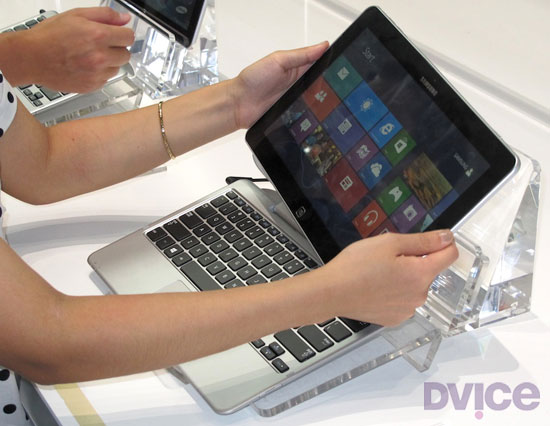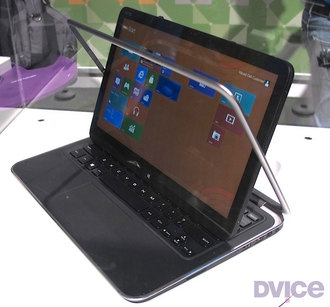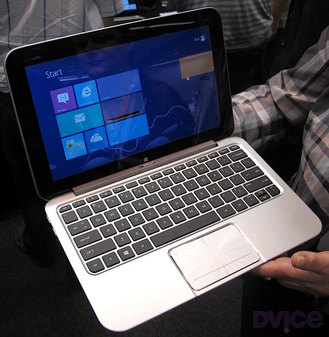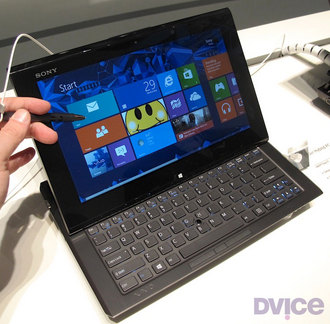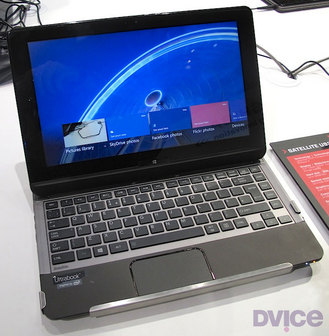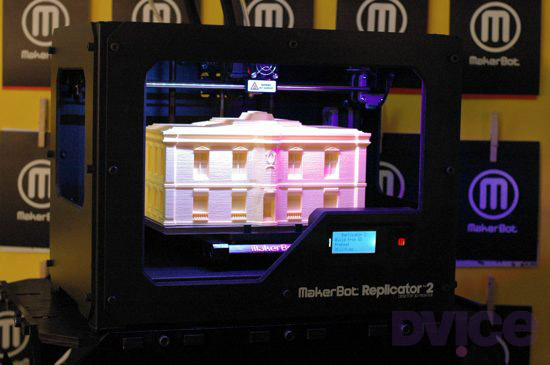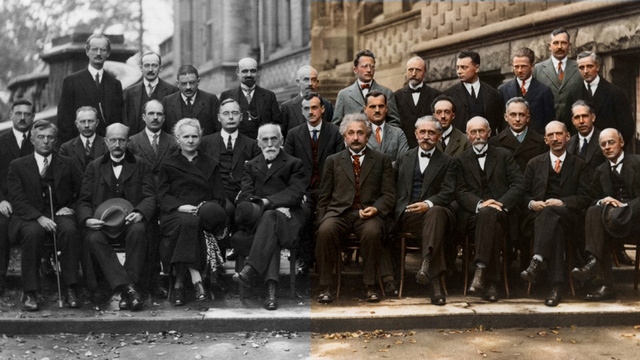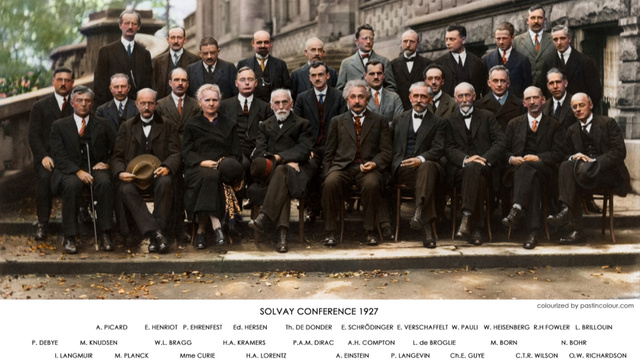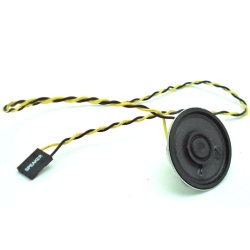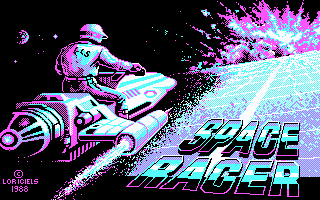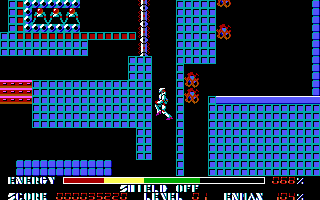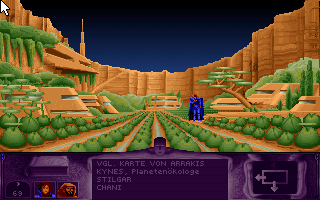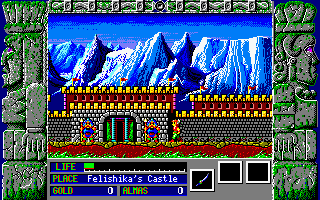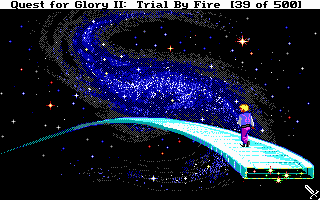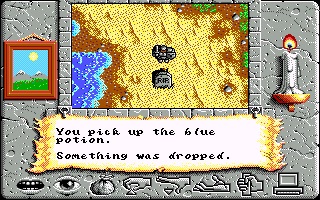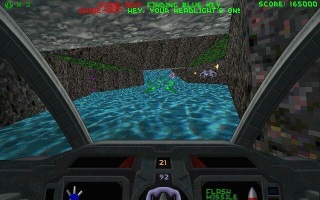Tuesday, September 25. 2012
Power, Pollution and the Internet
Via New York Times
-----
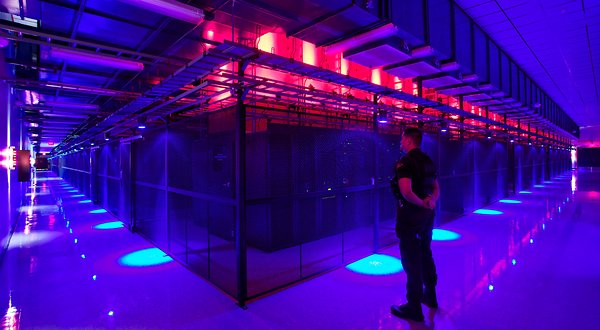
SANTA CLARA, Calif. — Jeff Rothschild’s machines at Facebook had a problem he knew he had to solve immediately. They were about to melt.
The company had been packing a 40-by-60-foot rental space here with racks of computer servers that were needed to store and process information from members’ accounts. The electricity pouring into the computers was overheating Ethernet sockets and other crucial components.
Thinking fast, Mr. Rothschild, the company’s engineering chief, took some employees on an expedition to buy every fan they could find — “We cleaned out all of the Walgreens in the area,” he said — to blast cool air at the equipment and prevent the Web site from going down.
That was in early 2006, when Facebook had a quaint 10 million or so users and the one main server site. Today, the information generated by nearly one billion people requires outsize versions of these facilities, called data centers, with rows and rows of servers spread over hundreds of thousands of square feet, and all with industrial cooling systems.
They are a mere fraction of the tens of thousands of data centers that now exist to support the overall explosion of digital information. Stupendous amounts of data are set in motion each day as, with an innocuous click or tap, people download movies on iTunes, check credit card balances through Visa’s Web site, send Yahoo e-mail with files attached, buy products on Amazon, post on Twitter or read newspapers online.
A yearlong examination by The New York Times has revealed that this foundation of the information industry is sharply at odds with its image of sleek efficiency and environmental friendliness.
Most data centers, by design, consume vast amounts of energy in an incongruously wasteful manner, interviews and documents show. Online companies typically run their facilities at maximum capacity around the clock, whatever the demand. As a result, data centers can waste 90 percent or more of the electricity they pull off the grid, The Times found.
To guard against a power failure, they further rely on banks of generators that emit diesel exhaust. The pollution from data centers has increasingly been cited by the authorities for violating clean air regulations, documents show. In Silicon Valley, many data centers appear on the state government’s Toxic Air Contaminant Inventory, a roster of the area’s top stationary diesel polluters.
Worldwide, the digital warehouses use about 30 billion watts of electricity, roughly equivalent to the output of 30 nuclear power plants, according to estimates industry experts compiled for The Times. Data centers in the United States account for one-quarter to one-third of that load, the estimates show.
“It’s staggering for most people, even people in the industry, to understand the numbers, the sheer size of these systems,” said Peter Gross, who helped design hundreds of data centers. “A single data center can take more power than a medium-size town.”
Energy efficiency varies widely from company to company. But at the request of The Times, the consulting firm McKinsey & Company analyzed energy use by data centers and found that, on average, they were using only 6 percent to 12 percent of the electricity powering their servers to perform computations. The rest was essentially used to keep servers idling and ready in case of a surge in activity that could slow or crash their operations.
A server is a sort of bulked-up desktop computer, minus a screen and keyboard, that contains chips to process data. The study sampled about 20,000 servers in about 70 large data centers spanning the commercial gamut: drug companies, military contractors, banks, media companies and government agencies.
“This is an industry dirty secret, and no one wants to be the first to say mea culpa,” said a senior industry executive who asked not to be identified to protect his company’s reputation. “If we were a manufacturing industry, we’d be out of business straightaway.”
These physical realities of data are far from the mythology of the Internet: where lives are lived in the “virtual” world and all manner of memory is stored in “the cloud.”
The inefficient use of power is largely driven by a symbiotic relationship between users who demand an instantaneous response to the click of a mouse and companies that put their business at risk if they fail to meet that expectation.
Even running electricity at full throttle has not been enough to satisfy the industry. In addition to generators, most large data centers contain banks of huge, spinning flywheels or thousands of lead-acid batteries — many of them similar to automobile batteries — to power the computers in case of a grid failure as brief as a few hundredths of a second, an interruption that could crash the servers.
“It’s a waste,” said Dennis P. Symanski, a senior researcher at the Electric Power Research Institute, a nonprofit industry group. “It’s too many insurance policies.”
Monday, September 24. 2012
Get ready for 'laptabs' to proliferate in a Windows 8 world
Via DVICE
-----
Image Credit: Stewart Wolpin/DVICE
A few months after the iPad came out, computer makers who had made convertible laptops started phasing them out, believing the iPad usurped their need. What's old is new again: several computer makers are planning to introduce new Windows 8 convertible laptops soon after Microsoft makes the OS official on October 26.
I agree with the assessment that the iPad stymied the need for convertible laptops; if you need a keyboard with the lighter-than-a-convertible iPad, or even an Android tablet, you could buy an auxiliary Bluetooth QWERTY keypad. In fact, your bag would probably be lighter with an iPad and an ultrabook both contained therein, as opposed to a single convertible laptop.
But if these new hybrids succeed, we can't keep calling them "convertible laptops" (for one thing, it takes too long to type). So, I'm inventing a new name for these sometimes-a-laptop, sometimes-a-tablet combo computers.
"Laptabs!"
It's a name I'd trademark if I could (I wish I'd made up "phablet," for instance). Please cite me if you use it. (And don't get dyslexically clever and start calling them "tablaps" — I'm claiming that portmanteau, too.)
Here's the convertible rundown on the five laptabs I found during last months IFA electronics showcase in Berlin, Germany — some have sliding tops and some have detachable tabs, but they're all proper laptabs.
1. Dell XPS Duo 12 It looks like a regular clamshell at first glance, but the 12.5-inch screen pops out and swivels 360 degrees on its central horizontal axis inside the machined aluminum frame, then lies back-to-front over the keyboard to create one fat tablet. The idea isn't exactly original — the company put out a 10.1-inch Inspiron Duo netbook a few years back with the same swinging configuration, but was discontinued when the iPad also killed the netbook.
2. HP Envy X2 Here's a detachable tablet laptab with an 11.6-inch snap-off screen. Combined with its keyboard, the X2 weighs a whopping 3.1 pounds; the separated screen/tablet tips the scales at just 1.5 pounds. Its heavier-than-thou nature stems from HP building a battery into both the X2's keyboard and the screen/tablet. HP didn't have a battery life rating, only saying the dual configuration meant it will be naturally massive.
3. Samsung ATIV Smart PC/Smart PC Pro Like the HP, Samsung's offering has an 11.6-inch screen that pops off the QWERTY keypad. The Pro sports an Intel Core i5 processor, measures 11.9 mm thick when closed and will run for eight hours on a single charge, while its sibling is endowed with an Intel Core i3 chip, measures a relatively svelte 9.9mm thin and operates for a healthy 13.5 hours on its battery.
4. Sony VAIO Duo 11 Isn't it odd that Sony and Dell came up with similar laptab appellations? Or maybe not. The VAIO Duo 11 is equipped with an 11.1-inch touchscreen that slides flat-then-back-to-front so it lies back-down on top of the keypad. You also get a digitizer stylus. Sony's Duo doesn't offer any weight advantages compared to an ultrabook, though, which I think poses a problem for most of these laptabs. For instance, both the Intel i3 and i5 Duo 11 editions weigh in nearly a half pound more than Apple's 11-inch Mac Book Air, and at 2.86 pounds, just 0.1 pounds lighter than the 13-inch MacBook Air.
5. Toshiba Satellite U920t Like the Sony Duo, the Satellite U920t is a back-to-front slider, but lacks the seemingly overly complex mechanism of its sliding laptab competitor. Instead, you lay the U920t's 12.5-inch screen flat, then slide it over the keyboard. While easier to slide, it's a bit thick at 19.9 mm compared to Duo 11's 17.8 mm depth, and weighs a heftier 3.2 pounds.
Choices, Choices And More Choices
So: a light ultrabook, or a heavier laptab? And once you pop the tab top off the HP and Samsung when mobile, your bag continues to be weighed down by the keyboard, obviating the whole advantage of carrying a tablet.
In other words, laptabs carry all the disadvantages of a heavier laptop with none of the weight advantages of a tablet. Perhaps there are some functionality advantages by having both; I just don't see these worth a sore back.
Check out the gallery below for a closer look at each laptab written about here.
All images above by Stewart Wolpin for DVICE.
MakerBot shows off next-gen Replicator 2 'desktop' 3D printer
Via DVICE
-----
The MakerBot Replicator 2 Desktop 3D Printer. (Image Credit: Kevin Hall/DVICE)
The new Replicator 2 looks good on a shelf, but also boasts two notable upgrades: it's insanely accurate with a 100-micron resolution, and can build objects 37 percent larger than its predecessor without adding roughly any bulk to its size.
In a small eatery in Brooklyn, New York, MakerBot CEO Bre Pettis unveiled the next generation Replicator 2, which he presented in terms of Apple-like evolution in design. From the memory of its own Apple IIe in much smaller DIY 3D printing kits comes the all-steel Replicator 2. The fourth generation MakerBot printer ditches the wood for a sleek hard-body chassis, and is "designed for the desktop of an engineer, researcher, creative professional, or anyone who loves to make things," according to the company.
Of course, MakerBot, which helps enable a robust community of 3D printing enthusiasts, is all about the idea of 3D printing at home. By calling them desktop 3D printers, MakerBot alludes to 1984's Apple Macintosh, the first computer designed to be affordable. The Macintosh was introduced at a fraction of the cost of the Lisa, which came before it and was the first computer with an easy-to-use graphical interface.
Each iteration of MakerBot's 3D printing technology has tried to find a sweet spot between utility and affordability. Usually, affordability comes at the cost of two things: micron-level layer resolutions (the first Replicator had a 270-micron layer resolution, nearly three times as thick) and enough area to build. The Replicator 2 prioritizes these things, and, while it only has a single-color extruder, can still be sold at an impressive $2,100.
Well, to really be a Macintosh, the Replicator 2 also needs a user-friendly GUI. To that end, MakerBot is announcing MakerWare, which will allow users to arrange shapes and resize them on the fly with a simple program. If you don't need precise sizes, you can just wing it and build a shape as large as you like in the Replicator 2's 410-cubic-inch build area. More advanced users can set out an array of parts with the tool across the build space, and print multiple smaller components at once:
Even with all that going for it, $2,100 isn't a very Macintosh price — the original Macintosh was far cheaper than the Lisa before it. MakerBot's 3D printers have gotten more expensive over the years: $750 Cupcake, $1,225 Thing-O-Matic, $1749 Replicator (which the company still sells), and now a $2,100 Replicator 2. With that in mind, maybe it's not price that will determine 3D printers finding a spot in every home, but the layer resolution.
Printing with a 100-micron layer resolution, the amount of material the Replicator 2 puts down to build an object is impressive. To illustrate, each layer is 100 microns, or 0.1 millimeters, thick. A six-inch-tall object, which the printer can manage, would be made of at least 1,500 layers.
Most importantly, at 100 microns, the objects printed feel smooth, where the previous generation of home printers created objects that had rough wavy edges. The Replicator 2 uses a special-to-MakerBot bioplastic that's made from corn (to quote Pettis: "It smells good, too"), and the 3D-printed sample MakerBot gave us definitely felt smooth with a barely detectable grain.
The MakerBot Replicator 2 appears on the October (2012, if you're from the future) issue of Wired magazine with the words, "This machine will change the world." Does that mean 3D printing affordable, useable, accurate and space-efficient, yet? If the answer is yes, you can get your own MakerBot Replicator 2 from MakerBot
(One last thing, Pettis urged us all to check out the the brochure as the MakerBot team "worked really hard on it" to make it the "best brochure in the universe." Straight from my notes to your screen.)
Thursday, September 20. 2012
Three-Minute Tech: LTE
Via TechHive
-----
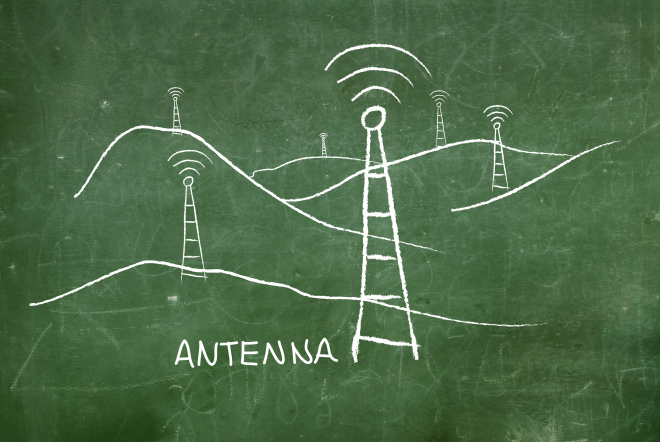
The iPhone 5 is the latest smartphone to hop on-board the LTE (Long Term Evolution) bandwagon, and for good reason: The mobile broadband standard is fast, flexible, and designed for the future. Yet LTE is still a young technology, full of growing pains. Here’s an overview of where it came from, where it is now, and where it might go from here.
The evolution of ‘Long Term Evolution’
LTE is a mobile broadband standard developed by the 3GPP (3rd Generation Partnership Project), a group that has developed all GSM standards since 1999. (Though GSM and CDMA—the network Verizon and Sprint use in the United States—were at one time close competitors, GSM has emerged as the dominant worldwide mobile standard.)
Cell networks began as analog, circuit-switched systems nearly identical in function to the public switched telephone network (PSTN), which placed a finite limit on calls regardless of how many people were speaking on a line at one time.
The second-generation, GPRS, added data (at dial-up modem speed). GPRS led to EDGE, and then 3G, which treated both voice and data as bits passing simultaneously over the same network (allowing you to surf the web and talk on the phone at the same time).
GSM-evolved 3G (which brought faster speeds) started with UMTS, and then accelerated into faster and faster variants of 3G, 3G+, and “4G” networks (HSPA, HSDPA, HSUPA, HSPA+, and DC-HSPA).
Until now, the term “evolution” meant that no new standard broke or failed to work with the older ones. GSM, GPRS, UMTS, and so on all work simultaneously over the same frequency bands: They’re intercompatible, which made it easier for carriers to roll them out without losing customers on older equipment. But these networks were being held back by compatibility.
That’s where LTE comes in. The “long term” part means: “Hey, it’s time to make a big, big change that will break things for the better.”
LTE needs its own space, man
LTE has “evolved” beyond 3G networks by incorporating new radio technology and adopting new spectrum. It allows much higher speeds than GSM-compatible standards through better encoding and wider channels. (It’s more “spectrally efficient,” in the jargon.)
LTE is more flexible than earlier GSM-evolved flavors, too: Where GSM’s 3G variants use 5 megahertz (MHz) channels, LTE can use a channel size from 1.4 MHz to 20 MHz; this lets it work in markets where spectrum is scarce and sliced into tiny pieces, or broadly when there are wide swaths of unused or reassigned frequencies. In short, the wider the channel—everything else being equal—the higher the throughput.
Speeds are also boosted through MIMO (multiple input, multiple output), just as in 802.11n Wi-Fi. Multiple antennas allow two separate benefits: better reception, and multiple data streams on the same spectrum.
LTE complications
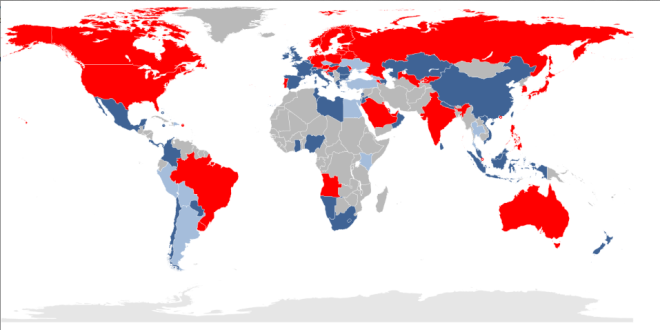
Unfortunately, in practice, LTE implementation gets sticky: There are 33 potential bands for LTE, based on a carrier’s local regulatory domain. In contrast, GSM has just 14 bands, and only five of those are widely used. (In broad usage, a band is two sets of paired frequencies, one devoted to upstream traffic and the other committed to downstream. They can be a few MHz apart or hundreds of MHz apart.)
And while LTE allows voice, no standard has yet been agreed upon; different carriers could ultimately choose different approaches, leaving it to handset makers to build multiple methods into a single phone, though they’re trying to avoid that. In the meantime, in the U.S., Verizon and AT&T use the older CDMA and GSM networks for voice calls, and LTE for data.
LTE in the United States
Of the four major U.S. carriers, AT&T, Verizon, and Sprint have LTE networks, with T-Mobile set to start supporting LTE in the next year. But that doesn’t mean they’re set to play nice. We said earlier that current LTE frequencies are divided up into 33 spectrum bands: With the exception of AT&T and T-Mobile, which share frequencies in band 4, each of the major U.S. carriers has its own band. Verizon uses band 13; Sprint has spectrum in band 26; and AT&T holds band 17 in addition to some crossover in band 4.
In addition, smaller U.S. carriers, like C Spire, U.S. Cellular, and Clearwire, all have their own separate piece of the spectrum pie: C Spire and U.S. Cellular use band 12, while Clearwire uses band 41.
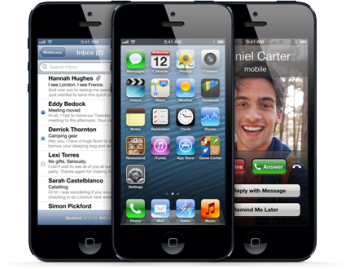
As such, for a manufacturer to support LTE networks in the United States alone, it would need to build a receiver that could tune into seven different LTE bands—let alone the various flavors of GSM-evolved or CDMA networks.
With the iPhone, Apple tried to cut through the current Gordian Knot by releasing two separate models, the A1428 and A1429, which cover a limited number of different frequencies depending on where they’re activated. (Apple has kindly released a list of countries that support its three iPhone 5 models.) Other companies have chosen to restrict devices to certain frequencies, or to make numerous models of the same phone.
Banded together
Other solutions are coming. Qualcomm made a regulatory filing in June regarding a seven-band LTE chip, which could be in shipping devices before the end of 2012 and could allow a future iPhone to be activated in different fashions. Within a year or so, we should see most-of-the-world phones, tablets, and other LTE mobile devices that work on the majority of large-scale LTE networks.
That will be just in time for the next big thing: LTE-Advanced, the true fulfillment of what was once called 4G networking, with rates that could hit 1 Gbps in the best possible cases of wide channels and short distances. By then, perhaps the chip, handset, and carrier worlds will have converged to make it all work neatly together.
Wednesday, September 19. 2012
A Genome-Wide Association Study Identifies Five Loci Influencing Facial Morphology in Europeans
Via PLOS genetics
-----
Abstract
Inter-individual variation in facial shape is one of the most noticeable phenotypes in humans, and it is clearly under genetic regulation; however, almost nothing is known about the genetic basis of normal human facial morphology. We therefore conducted a genome-wide association study for facial shape phenotypes in multiple discovery and replication cohorts, considering almost ten thousand individuals of European descent from several countries. Phenotyping of facial shape features was based on landmark data obtained from three-dimensional head magnetic resonance images (MRIs) and two-dimensional portrait images. We identified five independent genetic loci associated with different facial phenotypes, suggesting the involvement of five candidate genes—PRDM16, PAX3, TP63, C5orf50, and COL17A1—in the determination of the human face. Three of them have been implicated previously in vertebrate craniofacial development and disease, and the remaining two genes potentially represent novel players in the molecular networks governing facial development. Our finding at PAX3 influencing the position of the nasion replicates a recent GWAS of facial features. In addition to the reported GWA findings, we established links between common DNA variants previously associated with NSCL/P at 2p21, 8q24, 13q31, and 17q22 and normal facial-shape variations based on a candidate gene approach. Overall our study implies that DNA variants in genes essential for craniofacial development contribute with relatively small effect size to the spectrum of normal variation in human facial morphology. This observation has important consequences for future studies aiming to identify more genes involved in the human facial morphology, as well as for potential applications of DNA prediction of facial shape such as in future forensic applications.
Introduction
The morphogenesis and patterning of the face is one of the most complex events in mammalian embryogenesis. Signaling cascades initiated from both facial and neighboring tissues mediate transcriptional networks that act to direct fundamental cellular processes such as migration, proliferation, differentiation and controlled cell death. The complexity of human facial development is reflected in the high incidence of congenital craniofacial anomalies, and almost certainly underlies the vast spectrum of subtle variation that characterizes facial appearance in the human population.
Facial appearance has a strong genetic component; monozygotic (MZ) twins look more similar than dizygotic (DZ) twins or unrelated individuals. The heritability of craniofacial morphology is as high as 0.8 in twins and families [1], [2], [3]. Some craniofacial traits, such as facial height and position of the lower jaw, appear to be more heritable than others [1], [2], [3]. The general morphology of craniofacial bones is largely genetically determined and partly attributable to environmental factors [4]–[11]. Although genes have been mapped for various rare craniofacial syndromes largely inherited in Mendelian form [12], the genetic basis of normal variation in human facial shape is still poorly understood. An appreciation of the genetic basis of facial shape variation has far reaching implications for understanding the etiology of facial pathologies, the origin of major sensory organ systems, and even the evolution of vertebrates [13], [14]. In addition, it is feasible to speculate that once the majority of genetic determinants of facial morphology are understood, predicting facial appearance from DNA found at a crime scene will become useful as investigative tool in forensic case work [15]. Some externally visible human characteristics, such as eye color [16]–[18] and hair color [19], can already be inferred from a DNA sample with practically useful accuracies.
In a recent candidate gene study carried out in two independent European population samples, we investigated a potential association between risk alleles for non-syndromic cleft lip with or without cleft palate (NSCL/P) and nose width and facial width in the normal population [20]. Two NSCL/P associated single nucleotide polymorphisms (SNPs) showed association with different facial phenotypes in different populations. However, facial landmarks derived from 3-Dimensional (3D) magnetic resonance images (MRI) in one population and 2-Dimensional (2D) portrait images in the other population were not completely comparable, posing a challenge for combining phenotype data. In the present study, we focus on the MRI-based approach for capturing facial morphology since previous facial imaging studies by some of us have demonstrated that MRI-derived soft tissue landmarks represent a reliable data source [21], [22].
In geometric morphometrics, there are different ways to deal with the confounders of position and orientation of the landmark configurations, such as (1) superimposition [23], [24] that places the landmarks into a consensus reference frame; (2) deformation [25]–[27], where shape differences are described in terms of deformation fields of one object onto another; and (3) linear distances [28], [29], where Euclidean distances between landmarks instead of their coordinates are measured. Rationality and efficacy of these approaches have been reviewed and compared elsewhere [30]–[32]. We briefly compared these methods in the context of our genome-wide association study (GWAS) (see Methods section) and applied them when appropriate.
We extracted facial landmarks from 3D head MRI in 5,388 individuals of European origin from Netherlands, Australia, and Germany, and used partial Procrustes superimposition (PS) [24], [30], [33] to superimpose different sets of facial landmarks onto a consensus 3D Euclidean space. We derived 48 facial shape features from the superimposed landmarks and estimated their heritability in 79 MZ and 90 DZ Australian twin pairs. Subsequently, we conducted a series of GWAS separately for these facial shape dimensions, and attempted to replicate the identified associations in 568 Canadians of European (French) ancestry with similar 3D head MRI phenotypes and additionally sought supporting evidence in further 1,530 individuals from the UK and 2,337 from Australia for whom facial phenotypes were derived from 2D portrait images.
-----
The full article@PLOS genetics
Tuesday, September 18. 2012
Stretchable, Tattoo-Like Electronics Are Here to Check Your Health
Via Motherboard
-----

Wearable computing is all the rage this year as Google pulls back the curtain on their Glass technology, but some scientists want to take the idea a stage further. The emerging field of stretchable electronics is taking advantage of new polymers that allow you to not just wear your computer but actually become a part of the circuitry. By embedding the wiring into a stretchable polymer, these cutting edge devices resemble human skin more than they do circuit boards. And with a whole host of possible medical uses, that’s kind of the point.
A Cambridge, Massachusetts startup called MC10 is leading the way in stretchable electronics. So far, their products are fairly simple. There’s a patch that’s meant to be installed right on the skin like a temporary tattoo that can sense whether or not the user is hydrated as well as an inflatable balloon catheter that can measure the electronic signals of the user’s heartbeat to search for irregularities like arrythmias. Later this year, they’re launching a mysterious product with Reebok that’s expected to take advantage of the technology’s ability to detect not only heartbeat but also respiration, body temperature, blood oxygenation and so forth.
The joy of stretchable electronics is that the manufacturing process is not unlike that of regular electronics. Just like with a normal microchip, gold electrodes and wires are deposited on to thin silicone wafers, but they’re also embedded in the stretchable polymer substrate. When everything’s in place, the polymer substrate with embedded circuitry can be peeled off and later installed on a new surface. The components that can be added to stretchable surface include sensors, LEDs, transistors, wireless antennas and solar cells for power.
For now, the technology is still the nascent stages, but scientists have high hopes. In the future, you could wear a temporary tattoo that would monitor your vital signs, or doctors might install stretchable electronics on your organs to keep track of their behavior. Stretchable electronics could also be integrated into clothing or paired with a smartphone. Of course, if all else fails, it’ll probably make for some great children’s toys.
Wednesday, September 12. 2012
Twenty-nine of history’s most iconic scientists in one photograph – now in color!
Via io9
-----
It was originally captured in 1927 at the fifth Solvay Conference, one of the most star-studded meetings of scientific minds in history. Notable attendees included Albert Einstein, Niels Bohr, Marie Curie, Erwin Schrödinger, Werner Heisenberg, Wolfgang Pauli, Paul Dirac and Louis de Broglie — to name a few.
Of the 29 scientists in attendance (the majority of whom contributed to the fields of physics and chemistry), over half of them were, or would would go to become, Nobel laureates. (It bears mentioning that Marie Curie, the only woman in attendance at the conference, remains the only scientist in history to be awarded Nobel Prizes in two different scientific fields.)
All this is to say that this photo is beyond epic. Now, thanks to the masterful work of redditor mygrapefruit, this photo is more impressive, still. Through a process known as colorization, mygrapefruit has given us an an even better idea of what this scene might have looked like had we attended the conference in person back in 1927; and while the Sweden-based artist typically charges for her skills, she's included a link to a hi-res, print-size download of the colorized photo featured below, free of charge.
You can learn more about the colorization process, and check out more of mygrapefruit's work, over on her website.
Wednesday, September 05. 2012
IBM produces first working chips modeled on the human brain
Via Venture Beat
-----
IBM has been shipping computers for more than 65 years, and it is finally on the verge of creating a true electronic brain.
Big Blue is announcing today that it, along with four universities and the Defense Advanced Research Projects Agency (DARPA), have created the basic design of an experimental computer chip that emulates the way the brain processes information.
IBM’s so-called cognitive computing chips could one day simulate and emulate the brain’s ability to sense, perceive, interact and recognize — all tasks that humans can currently do much better than computers can.
Dharmendra Modha (pictured below right) is the principal investigator of the DARPA project, called Synapse (Systems of Neuromorphic Adaptive Plastic Scalable Electronics, or SyNAPSE). He is also a researcher at the IBM Almaden Research Center in San Jose, Calif.
“This is the seed for a new generation of computers, using a combination of supercomputing, neuroscience, and nanotechnology,” Modha said in an interview with VentureBeat. ”The computers we have today are more like calculators. We want to make something like the brain. It is a sharp departure from the past.”
If it eventually leads to commercial brain-like chips, the project could turn computing on its head, overturning the conventional style of computing that has ruled since the dawn of the information age and replacing it with something that is much more like a thinking artificial brain. The eventual applications could have a huge impact on business, science and government. The idea is to create computers that are better at handling real-world sensory problems than today’s computers can. IBM could also build a better Watson, the computer that became the world champion at the game show Jeopardy earlier this year.
We wrote about the project when IBM announced the project in November, 2008 and again when it hit its first milestone in November, 2009. Now the researchers have completed phase one of the project, which was to design a fundamental computing unit that could be replicated over and over to form the building blocks of an actual brain-like computer.
Richard Doherty, an analyst at the Envisioneering Group, has been briefed on the project and he said there is “nothing even close” to the level of sophistication in cognitive computing as this project.
This new computing unit, or core, is analogous to the brain. It has “neurons,” or digital processors that compute information. It has “synapses” which are the foundation of learning and memory. And it has “axons,” or data pathways that connect the tissue of the computer.
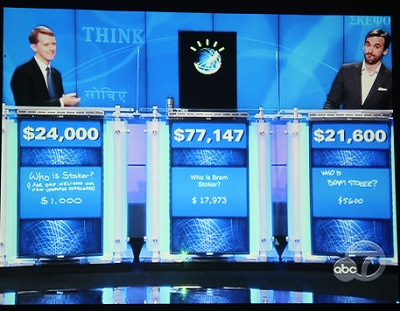 While it sounds simple enough, the computing unit is radically different from the way most computers operate today. Modern computers are based on the von Neumann architecture, named after computing pioneer John von Neumann and his work from the 1940s.
While it sounds simple enough, the computing unit is radically different from the way most computers operate today. Modern computers are based on the von Neumann architecture, named after computing pioneer John von Neumann and his work from the 1940s.
In von Neumann machines, memory and processor are separated and linked via a data pathway known as a bus. Over the past 65 years, von Neumann machines have gotten faster by sending more and more data at higher speeds across the bus, as processor and memory interact. But the speed of a computer is often limited by the capacity of that bus, leading some computer scientists to call it the “von Neumann bottleneck.”
With the human brain, the memory is located with the processor (at least, that’s how it appears, based on our current understanding of what is admittedly a still-mysterious three pounds of meat in our heads).
The brain-like processors with integrated memory don’t operate fast at all, sending data at a mere 10 hertz, or far slower than the 5 gigahertz computer processors of today. But the human brain does an awful lot of work in parallel, sending signals out in all directions and getting the brain’s neurons to work simultaneously. Because the brain has more than 10 billion neuron and 10 trillion connections (synapses) between those neurons, that amounts to an enormous amount of computing power.
IBM wants to emulate that architecture with its new chips.
“We are now doing a new architecture,” Modha said. “It departs from von Neumann in variety of ways.”
 The research team has built its first brain-like computing units, with 256 neurons, an array of 256 by 256 (or a total of 65,536) synapses, and 256 axons. (A second chip had 262,144 synapses) In other words, it has the basic building block of processor, memory, and communications. This unit, or core, can be built with just a few million transistors (some of today’s fastest microchips can be built with billions of transistors).
The research team has built its first brain-like computing units, with 256 neurons, an array of 256 by 256 (or a total of 65,536) synapses, and 256 axons. (A second chip had 262,144 synapses) In other words, it has the basic building block of processor, memory, and communications. This unit, or core, can be built with just a few million transistors (some of today’s fastest microchips can be built with billions of transistors).
Modha said that this new kind of computing will likely complement, rather than replace, von Neumann machines, which have become good at solving problems involving math, serial processing, and business computations. The disadvantage is that those machines aren’t scaling up to handle big problems well any more. They are using too much power and are harder to program.
The more powerful a computer gets, the more power it consumes, and manufacturing requires extremely precise and expensive technologies. And the more components are crammed together onto a single chip, the more they “leak” power, even in stand-by mode. So they are not so easily turned off to save power.
The advantage of the human brain is that it operates on very low power and it can essentially turn off parts of the brain when they aren’t in use.
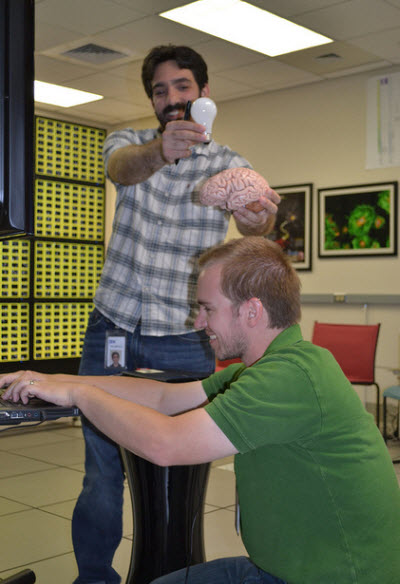 These new chips won’t be programmed in the traditional way. Cognitive computers are expected to learn through experiences, find correlations, create hypotheses, remember, and learn from the outcomes. They mimic the brain’s “structural and synaptic plasticity.” The processing is distributed and parallel, not centralized and serial.
These new chips won’t be programmed in the traditional way. Cognitive computers are expected to learn through experiences, find correlations, create hypotheses, remember, and learn from the outcomes. They mimic the brain’s “structural and synaptic plasticity.” The processing is distributed and parallel, not centralized and serial.
With no set programming, the computing cores that the researchers have built can mimic the event-driven brain, which wakes up to perform a task.
Modha said the cognitive chips could get by with far less power consumption than conventional chips.
The so-called “neurosynaptic computing chips” recreate a phenomenon known in the brain as a “spiking” between neurons and synapses. The system can handle complex tasks such as playing a game of Pong, the original computer game from Atari, Modha said.
Two prototype chips have already been fabricated and are being tested. Now the researchers are about to embark on phase two, where they will build a computer. The goal is to create a computer that not only analyzes complex information from multiple senses at once, but also dynamically rewires itself as it interacts with the environment, learning from what happens around it.
The chips themselves have no actual biological pieces. They are fabricated from digital silicon circuits that are inspired by neurobiology. The technology uses 45-nanometer silicon-on-insulator complementary metal oxide semiconductors. In other words, it uses a very conventional chip manufacturing process. One of the cores contains 262,144 programmable synapses, while the other contains 65,536 learning synapses.
Besides playing Pong, the IBM team has tested the chip on solving problems related to navigation, machine vision, pattern recognition, associative memory (where you remember one thing that goes with another thing) and classification.
Eventually, IBM will combine the cores into a full integrated system of hardware and software. IBM wants to build a computer with 10 billion neurons and 100 trillion synapses, Modha said. That’s as powerful than the human brain. The complete system will consume one kilowatt of power and will occupy less than two liters of volume (the size of our brains), Modha predicts. By comparison, today’s fastest IBM supercomputer, Blue Gene, has 147,456 processors, more than 144 terabytes of memory, occupies a huge, air-conditioned cabinet, and consumes more than 2 megawatts of power.
As a hypothetical application, IBM said that a cognitive computer could monitor the world’s water supply via a network of sensors and tiny motors that constantly record and report data such as temperature, pressure, wave height, acoustics, and ocean tide. It could then issue tsunami warnings in case of an earthquake. Or, a grocer stocking shelves could use an instrumented glove that monitors sights, smells, texture and temperature to flag contaminated produce. Or a computer could absorb data and flag unsafe intersections that are prone to traffic accidents. Those tasks are too hard for traditional computers.
Synapse is funded with a $21 million grant from DARPA, and it involve six IBM labs, four universities (Cornell, the University of Wisconsin, University of California at Merced, and Columbia) and a number of government researchers.
For phase 2, IBM is working with a team of researchers that includes Columbia University; Cornell University; University of
California, Merced; and University of Wisconsin, Madison. While this project is new, IBM has been studying brain-like computing as far back as 1956, when it created the world’s first (512 neuron) brain simulation.
“If this works, this is not just a 5 percent leap,” Modha said. “This is a leap of orders of magnitude forward. We have already overcome huge conceptual roadblocks.”
[Photo credits: Dean Takahashi, IBM]
Tuesday, September 04. 2012
The History of Sound Cards and Computer Game Music
Via MacGateway
-----
1981: PC Speaker
If you had an IBM PC computer or a 100-percent compatible clone between 1981-1988, you were most likely listening to — or cutting the wires of — your computer’s internal speaker. The PC speaker was solely a rudimentary tone generator. It played one note at a time, didn’t have different instruments for composers to choose from and even lacked volume control. As a result, music played on the PC speaker tended to sound tinny and grating. Composers could get around these problems by varying the pitch of a note slightly to create vibrato and playing fast arpeggios to simulate the sound of multiple notes being played simultaneously. By playing short “blips” between notes — short low-pitched sounds in the middle of a longer, high-pitched sound, for example — it was possible to simulate percussion. However, most PC speaker music didn’t have this much effort put into it; game music from this era often sounded rather monotonous. Through a clever hack, some computer games from the late ’80s actually played 6-bit digital sound through the PC speaker. However, this technology was used in few games because it was difficult to play digital sound through the speaker without sacrificing speed. When sound cards began to drop in price, the digital sound hack became irrelevant.
Listen to the PC Speaker
Composed by Nobuyuki Aoshima, Mecano Associates, Hibiki Godai, Fumihito Kasatani and Hiromi Ohba. Developed by Game Arts and published by Sierra On-Line.
This piece from the Silpheed soundtrack illustrates the technique most composers used when writing music for the PC speaker; the speaker plays the main melody only, and no tricks are used to simulate rhythm or accompaniment.
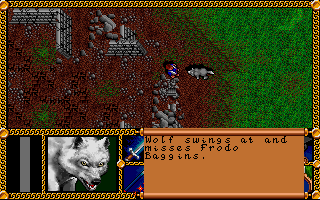 J. R. R. Tolkien’s The Lord of the Rings, Vol. I (1990)
J. R. R. Tolkien’s The Lord of the Rings, Vol. I (1990)
Composed by Charles Deenen and Kurt Heiden. Developed by Interplay and published by Electronic Arts.
By toggling rapidly between different notes, the theme from Interplay’s The Lord of the Rings creates the impression of up to four voices playing simultaneously from the PC speaker.
Composed by Michel Winogradoff. Developed and published by Loricels.
Hearing digital samples from an IBM-compatible computer before the release of the Sound Blaster was quite a novelty. Because of space limitations — Space Racer shipped on just one 5.25-inch floppy diskette — each sample is stored on the disk only once. The song is played by triggering the samples in a specific order.
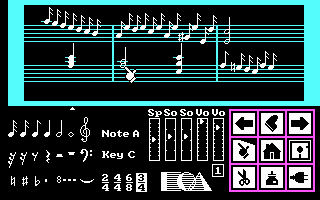 Will Harvey’s Music Construction Set (1984)
Will Harvey’s Music Construction Set (1984)
Unknown composer. Developed and published by Electronic Arts.
Music Construction Set accomplished the seemingly impossible by playing four simultaneous voices with no audible toggling. Although the voices have a bit of a “fuzzy” quality, you can clearly hear the details of the composition.
Unknown composer. Developed by Byron Preiss Video Productions and published by Telarium.
While PCjr and Tandy 1000 owners were treated to a wonderful three-voice opening theme when playing Rendezvous With Rama, the PC speaker version of the theme switches confusingly from one “instrument” to another in an attempt to create the same effect.
1984: IBM PCjr and Tandy 1000
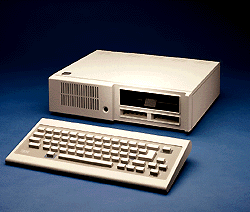 The
PCjr was released by IBM in 1984 as an attempt to provide better
competition for Apple in the home computer market. The PCjr included
features designed to appeal to home users, such as an infrared wireless
keyboard, cartridge slots and expansion hardware that could be installed
without opening the computer. More importantly, the PCjr featured
enhanced graphics and a sound chip that could play three voices
simultaneously rather than the one voice of the original IBM PC. IBM
contacted the game company Sierra On-Line, asking them to design a game
that would show off the enhanced graphics and sound of the PCjr. The
result was King’s Quest. The game became an enormous hit, saving Sierra from a failed investment in cartridge-based games just before the video game crash of 1983 and spawning a series that lasted 14 years.
The
PCjr was released by IBM in 1984 as an attempt to provide better
competition for Apple in the home computer market. The PCjr included
features designed to appeal to home users, such as an infrared wireless
keyboard, cartridge slots and expansion hardware that could be installed
without opening the computer. More importantly, the PCjr featured
enhanced graphics and a sound chip that could play three voices
simultaneously rather than the one voice of the original IBM PC. IBM
contacted the game company Sierra On-Line, asking them to design a game
that would show off the enhanced graphics and sound of the PCjr. The
result was King’s Quest. The game became an enormous hit, saving Sierra from a failed investment in cartridge-based games just before the video game crash of 1983 and spawning a series that lasted 14 years.
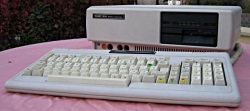 Some
of IBM’s design decisions for the PCjr were poor ones, and the computer
ultimately failed. However, Radio Shack’s Tandy 1000 — an
IBM-compatible computer with the same video and sound capabilities as
the PCjr — was a big seller. IBM still set the computing standard at
that point, and since the PCjr wasn’t a success, not all games took
advantage of the Tandy 1000?s advanced sound capabilities. Those that
did provided a significantly better audio experience on the Tandy 1000
than they did on the IBM PC.
Some
of IBM’s design decisions for the PCjr were poor ones, and the computer
ultimately failed. However, Radio Shack’s Tandy 1000 — an
IBM-compatible computer with the same video and sound capabilities as
the PCjr — was a big seller. IBM still set the computing standard at
that point, and since the PCjr wasn’t a success, not all games took
advantage of the Tandy 1000?s advanced sound capabilities. Those that
did provided a significantly better audio experience on the Tandy 1000
than they did on the IBM PC.
Listen to the Tandy 1000
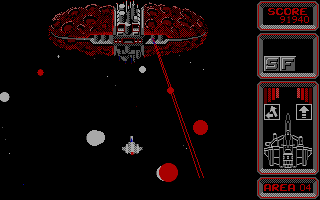 Silpheed (1988)
Silpheed (1988)
Although the sound chip of the Tandy 1000 lacked an effects channel for percussion, the three-voice polyphony made it possible to construct a full piece of music with melody, harmony and bass. The Tandy 1000 version of the Silpheed soundtrack was a significant improvement over the PC speaker version.
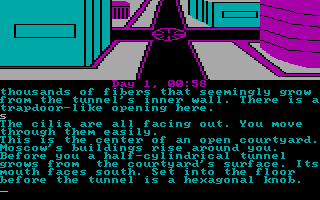 Rendezvous With Rama (1984)
Rendezvous With Rama (1984)
The Tandy 1000 version of the introduction piece for Rendezvous With Rama conveys the full effect of what the composer intended, while the PC speaker version could only “fake” it by switching from voice to voice. Because the quality of PC game music was generally rather low in the early ’80s, hearing such a complex piece at the beginning of a game was a real treat.
 Music Construction Set (1984)
Music Construction Set (1984)
The PC speaker version of Music Construction Set was done so well that the difference between it and the Tandy 1000 version isn’t quite “night and day” as it is with some other games. However, because the Tandy 1000 could play multiple voices without tricks, the tones do sound less “fuzzy.”
Composed by Hibiki Godai. Developed by Game Arts and published by Sierra On-Line.
Thexder, the pinnacle of PC action gaming in 1987. features an appropriately energetic soundtrack that makes use of arpeggios to suggest chord changes. If the music sounds familiar to you, it may have something to do with the fact that Hibiki Godai also contributed to the Silpheed soundtrack.
1987: AdLib Music Synthesizer
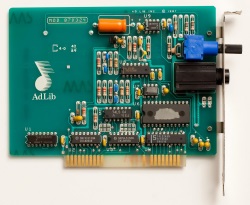 A
few different sound cards were available to purchase in 1987, but few
people other than professional musicians were aware of them. Sierra
On-Line became a driving force in the evolution of computer sound again,
approaching AdLib and Roland about putting together bundles of their
products — the AdLib Music Synthesizer card and Roland MT-32 sound
module — for Sierra to market. Sierra then hired professional musicians
such as William Goldstein (Fame) and Bob Siebenberg (Supertramp) to compose soundtracks supporting these devices for their upcoming games. Sierra also mailed letters
and demonstration cassettes to its customers to promote the AdLib and
Roland MT-32, and the consumer sound card market was born.
A
few different sound cards were available to purchase in 1987, but few
people other than professional musicians were aware of them. Sierra
On-Line became a driving force in the evolution of computer sound again,
approaching AdLib and Roland about putting together bundles of their
products — the AdLib Music Synthesizer card and Roland MT-32 sound
module — for Sierra to market. Sierra then hired professional musicians
such as William Goldstein (Fame) and Bob Siebenberg (Supertramp) to compose soundtracks supporting these devices for their upcoming games. Sierra also mailed letters
and demonstration cassettes to its customers to promote the AdLib and
Roland MT-32, and the consumer sound card market was born.
Although the Roland MT-32 was a far better synthesizer, it was the AdLib Music Synthesizer card that would set the standard in PC audio for the next few years — mostly due to its lower price tag. The AdLib cost $200, making it far more affordable than the $550 MT-32 ($1,053 in 2012 dollars). The AdLib generated music with a Yamaha YM3812 chip, which produced sound through FM synthesis. The YM3812 was also known as the FM Operator Type-L 2 or OPL2 chip; it could play up to nine voices simultaneously and produced tones by manipulating waveforms such as sine and half-sine waves. The sound quality was not unlike that of the inexpensive Japanese keyboards that many families had stashed under their couches in the late ’80s. The AdLib lacked the ability to produce true stereo audio or play digital sound samples of any kind. Nevertheless, it could produce rich, full sounds in the hands of skilled composers, as demonstrated by some of the samples below. Its primary shortcoming stemmed from the fact that many game music composers focused most of their efforts on high-end MIDI hardware such as the Roland MT-32 and Sound Canvas SC-55. In converting these soundtracks for the AdLib, little time was spent tweaking the music to highlight the AdLib’s strengths. Some of the best AdLib music was composed by demoscene members and shareware game companies, perhaps because their smaller budgets made purchasing the expensive Roland hardware impossible.
Listen to the AdLib
 Silpheed (1988)
Silpheed (1988)
Although music produced by the AdLib may sound primitive by today’s standards, the AdLib version of the Silpheed soundtrack is a dramatic upgrade over the PC speaker version. This piece features percussion, synthesized brass, bass and bells.
The Alibi (1992)
The Alibi was originally composed for the Commodore 64 by Thomas E. Petersen (“Laxity”) and converted to the AdLib by Jens-Christian Huus (“LCH”). Both were members of the computer music group Vibrants. The Alibi features rich bass and makes full use of the AdLib’s capabilities. using techniques such as vibrato and ADSR envelopes for a more expressive sound.
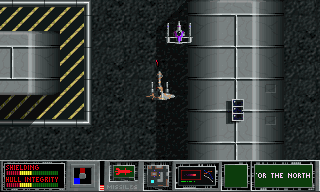 Traffic Department 2192 (1994)
Traffic Department 2192 (1994)
Composed by Robert A. Allen and Owen Pallett. Developed by P Squared and published by Safari Software.
Traffic Department 2192 supported only PC speaker and AdLib/Sound Blaster sound, possibly because the composer didn’t have access to high-end MIDI hardware. As a result, the soundtrack is engaging and comes off sounding like it was composed for the device rather than converted from the original MT-32 version.
Composed by Stéphane Picq. Developed by Cryo Interactive and published by Virgin Games.
Although Dune supported the Roland MT-32 and LAPC-1, it is the AdLib version of the soundtrack that everyone remembers — perhaps because few people owned the expensive Roland hardware, but also, I think, because of the skillfulness with which the soundtrack was composed. An enhanced version of the soundtrack was released as the CD Dune: Spice Opera. Unfortunately, the CD is out of print and very difficult to find.
Composed by Mieko Ishikawa, Y?z? Koshiro, Hideaki Nagata, and Reiko Takebayashi. Developed by Nihon Falcom and published by Sierra On-Line.
Sorcerian was a lengthy game for its time, and it has a long, varied soundtrack to match. Unfortunately, the AdLib conversion of the soundtrack suffers a bit from a lack of bass and comes off sounding a little tinny.
1987: Roland MT-32
 The
Roland MT-32 was a sound module that could be connected externally to a
computer via a MIDI interface card. It produced sound using a
combination of digital samples and subtractive waveform manipulation,
resulting in synthesized music that continues to sound quite
professional today. Roland later condensed the capabilities of the MT-32
into a computer expansion card called the LAPC-1. The LAPC-1 cost
slightly less than the MT-32 at $425, but it measured around 14 inches
in length and required a large computer chassis. The fact that the MT-32
could not play digital sound samples would become a limitation by the
early 1990s, but those who owned MT-32 experienced the best music that
computer games had to offer until pre-recorded digital sound became the
norm. The MT-32 could produce sound in true stereo, playing up to 32
voices simultaneously depending on the instruments selected. The string,
synthesizer and percussion sounds were particularly good for that era,
and the MT-32 even found its way into some mainstream music released
during the ’80s such as Pete Townshend’s song Man Machines.
The MT-32 also had a reverb effect, adding realism and depth to the
music. All sounds produced by the AdLib card were completely dry,
lacking environmental effects of any kind.
The
Roland MT-32 was a sound module that could be connected externally to a
computer via a MIDI interface card. It produced sound using a
combination of digital samples and subtractive waveform manipulation,
resulting in synthesized music that continues to sound quite
professional today. Roland later condensed the capabilities of the MT-32
into a computer expansion card called the LAPC-1. The LAPC-1 cost
slightly less than the MT-32 at $425, but it measured around 14 inches
in length and required a large computer chassis. The fact that the MT-32
could not play digital sound samples would become a limitation by the
early 1990s, but those who owned MT-32 experienced the best music that
computer games had to offer until pre-recorded digital sound became the
norm. The MT-32 could produce sound in true stereo, playing up to 32
voices simultaneously depending on the instruments selected. The string,
synthesizer and percussion sounds were particularly good for that era,
and the MT-32 even found its way into some mainstream music released
during the ’80s such as Pete Townshend’s song Man Machines.
The MT-32 also had a reverb effect, adding realism and depth to the
music. All sounds produced by the AdLib card were completely dry,
lacking environmental effects of any kind.
Listen to the Roland MT-32
 Silpheed (1988)
Silpheed (1988)
The Silpheed theme was one of the pieces that Sierra used to hype the Roland MT-32, and it was an appropriate choice; the beginning highlights the MT-32?s excellent built-in digital reverb, and the main section of the piece features excellent synth and wind sounds as well as a driving percussion track. While this is a catchy piece on any sound card, it was obviously meant to be heard on the MT-32.
Composed by Nobuyuki Aoshima and Fumihito Kasatani. Developed by Game Arts and published by Sierra On-Line.
The Roland MT-32 has a display screen that shows when instruments and other parameters change. Developers sometimes made it display fun messages, such as “Thank you for playing.” You could watch it to gain insight into how game music composers worked. This theme from Zeliard frequently changes lead instruments to add interest and variety.
Composed by Chris Braymen. Developed and published by Sierra On-Line.
This lovely piece from Quest for Glory II again highlights the lifelike reverb of the MT-32, while adding a “human” element in the subtle tempo and volume changes of the plucked harp.
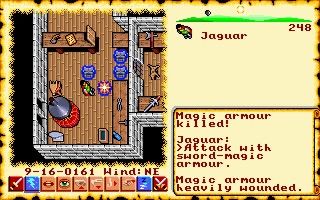 Ultima VI: The False Prophet (1990)
Ultima VI: The False Prophet (1990)
Composed by Kenneth W. Arnold. Developed and published by Origin.
Many of the pieces from Ultima VI are deceptively simple, featuring only a handful of different instruments. Nevertheless, this soundtrack has wiggled its way into the brain of many an Ultima fan and once it grabs hold, look out.
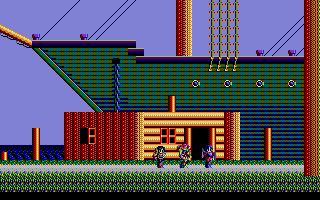 Sorcerian (1990)
Sorcerian (1990)
The synth-rock pieces in the Sorcerian soundtrack are some of the best that early ’90s computer games had to offer. On the MT-32, you can hear exactly what the soundtrack’s composers were going for: hard-driving drums, big synthesizer sounds and more than a little Duran Duran influence. In all, the Sorcerian soundtrack featured 59 distinct songs.
1988: Creative Music Systems Game Blaster
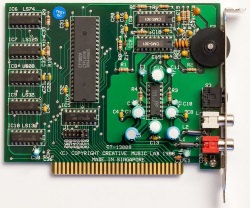 In
1987, Creative Music Systems released a sound card called the Creative
Music System or C/MS card, later re-releasing it through Radio Shack in
1988 as the Game Blaster. The Game Blaster could play up to 12 channels
of sound simultaneously in true stereo, with each channel playing a
square wave for melody or a noise for sound effects and percussion.
Because the square wave was the only non-percussion “instrument”
available. the Game Blaster was seen as vastly inferior to the AdLib. It
was similar in tonal quality to four Tandy 1000s playing
simultaneously, except for the fact that the Game Blaster had the
ability to adjust the volume of individual sound channels. The primary
companies that supported the Game Blaster were Sierra, Electronic Arts
and Accolade. Most other companies stayed away, and most consumers with
around $200 to spend on a sound card chose the AdLib. However, AdLib’s
superiority wouldn’t last much longer; in 1989, Creative Music Systems
rechristened itself Creative Labs and released the Sound Blaster.
In
1987, Creative Music Systems released a sound card called the Creative
Music System or C/MS card, later re-releasing it through Radio Shack in
1988 as the Game Blaster. The Game Blaster could play up to 12 channels
of sound simultaneously in true stereo, with each channel playing a
square wave for melody or a noise for sound effects and percussion.
Because the square wave was the only non-percussion “instrument”
available. the Game Blaster was seen as vastly inferior to the AdLib. It
was similar in tonal quality to four Tandy 1000s playing
simultaneously, except for the fact that the Game Blaster had the
ability to adjust the volume of individual sound channels. The primary
companies that supported the Game Blaster were Sierra, Electronic Arts
and Accolade. Most other companies stayed away, and most consumers with
around $200 to spend on a sound card chose the AdLib. However, AdLib’s
superiority wouldn’t last much longer; in 1989, Creative Music Systems
rechristened itself Creative Labs and released the Sound Blaster.
Listen to the Game Blaster
 Silpheed (1988)
Silpheed (1988)
The Game Blaster version of the Silpheed soundtrack is a slight improvement over the Tandy 1000 version but pales in comparison to the AdLib and MT-32 versions. The lack of percussion hampers the Game Blaster, as does the fact that many soundtracks utilized the high end of its tonal range, which tended to sound tinny.
Composed by Herman Miller and Martin Galway. Developed and Published by Origin.
When composers utilized the low end of the Game Blaster’s range, they could create rich, full music that was every bit as compelling as AdLib music in its own way. Unfortunately, few composers did. Times of Lore is perhaps the most prominent exception.
 Ultima VI (1990)
Ultima VI (1990)
While the Game Blaster version of the Ultima VI soundtrack stays within the Game Blaster’s lower register, it doesn’t play to the card’s strengths quite as well as the Times of Lore soundtrack did and pales in comparison to the MT-32 version. Because few people purchased Game Blaster cards, creating soundtracks that lived up to the card’s potential was rarely a priority.
 Sorcerian (1990)
Sorcerian (1990)
The Game Blaster adaptation of the Sorcerian soundtrack fails to convey the synth-rock excitement of the original MT-32 version. By staying within the card’s high register, the music sounds thin and overly computerized.
1989: Creative Labs Sound Blaster
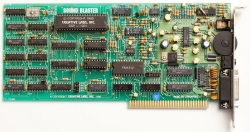 In
the history of the computer industry, many companies have designed
products using off-the-shelf components to save on development costs and
get something to the market as quickly as possible, only to be
outplayed later by clone manufacturers. The IBM PC is the most prominent
example, and the AdLib Music Synthesizer card is another. The AdLib
used the Yamaha YM3812 chip — which anyone could buy — to produce sound.
Because of the low price and the fact that it was one of the first
sound cards supported by computer games, the AdLib became the first de
facto standard for audio in IBM-compatible computers. Creative Music
Systems may have failed to set a new standard with the Game Blaster, but
the rechristened Creative Labs wouldn’t make the same mistake. The
Sound Blaster included the AdLib’s YM3812 chip, making it fully
compatible with the industry standard. However, it also had two highly
desirable features that the AdLib lacked: a game port and the ability to
record and play digital sounds. Although few games exploited the Sound
Blaster’s ability to play digital samples when it was first released,
the game port was a strong selling point because it allowed a computer
to support a joystick. Because game cards cost around $50 at the time, a
consumer could spend less — and get more — by buying the Sound Blaster
rather than the AdLib and a separate game card. Sound Blaster became the
new standard for computer audio, and although AdLib’s follow-up — the
AdLib Gold — was superior, AdLib lacked Creative Labs’ marketing skills
and was forced to file for bankruptcy in 1992.
In
the history of the computer industry, many companies have designed
products using off-the-shelf components to save on development costs and
get something to the market as quickly as possible, only to be
outplayed later by clone manufacturers. The IBM PC is the most prominent
example, and the AdLib Music Synthesizer card is another. The AdLib
used the Yamaha YM3812 chip — which anyone could buy — to produce sound.
Because of the low price and the fact that it was one of the first
sound cards supported by computer games, the AdLib became the first de
facto standard for audio in IBM-compatible computers. Creative Music
Systems may have failed to set a new standard with the Game Blaster, but
the rechristened Creative Labs wouldn’t make the same mistake. The
Sound Blaster included the AdLib’s YM3812 chip, making it fully
compatible with the industry standard. However, it also had two highly
desirable features that the AdLib lacked: a game port and the ability to
record and play digital sounds. Although few games exploited the Sound
Blaster’s ability to play digital samples when it was first released,
the game port was a strong selling point because it allowed a computer
to support a joystick. Because game cards cost around $50 at the time, a
consumer could spend less — and get more — by buying the Sound Blaster
rather than the AdLib and a separate game card. Sound Blaster became the
new standard for computer audio, and although AdLib’s follow-up — the
AdLib Gold — was superior, AdLib lacked Creative Labs’ marketing skills
and was forced to file for bankruptcy in 1992.
The first Sound Blaster included a chip that made it backwards-compatible with the Game Blaster. It could play 8-bit, 23 kHz audio and record 8-bit, 12 kHz audio, both in single-channel mono. Although this was significantly lower than CD quality, it worked well for sound effects in games. Prior to the release of the Sound Blaster, many games with AdLib support used the AdLib for music while playing sound effects through the PC speaker. The Sound Blaster provided a much better experience when its ability to play digital sounds was utilized. Unfortunately, the Sound Blaster could also be a bit buggy. It required manual IRQ configuration and frequently conflicted with other hardware in the computer. Digital sounds were preceded by loud pops and sometimes caused computers to lock up.
Listen to the Sound Blaster
Composed by Daniel Gardopee, Andrew G. Sega and Straylight Productions. Developed by Origin and published by Electronic Arts.
This piece from the Crusader installation program illustrates the Sound Blaster’s ability to play music based on digital samples. Although the Sound Blaster is limited to 8-bit mono sounds, the Crusader soundtrack sounds far better than most games that utilized the YM3812 chip. The AdLib could not have reproduced this soundtrack at all.
Composed by Ken Allen, Brian Luzietti, Larry Peacock, Leslie Spitzer, Jim Torres and Tim Wiles. Developed by Parallax Software and published by Interplay.
Descent was one of the few games with separate soundtracks for the Sound Blaster and Sound Blaster 16. This OPL2 version of the soundtrack utilizes the YM3812 chip, which means that it would sound exactly the same on the AdLib.
Composed by Johann Langlie, Brian Luzietti, Mark Morgan, Larry Peacock, Peter Rotter and Leslie Spitzer. Developed by Parallax Software and published by Interplay.
Although this piece from Descent II is more mature and complex than the selection from the first game, it seems to overpower the YM3812 at one point. Near the end of the piece, instruments begin to cut out, perhaps because the maximum polyphony of the Sound Blaster has been reached.
1991: Roland Sound Canvas SC-55
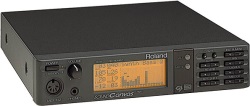 MIDI
— the Musical Instrument Digital Interface — was invented around 1982
as a means of communicating with electronic musical instruments. MIDI
allowed a musician with one keyboard to expand his available instrument
sounds by connecting sound modules such as the Roland MT-32. The
keyboard sent commands containing parameters such as the instrument
number and the pitch, volume and duration of the note, and the sound
module played the requested sound. MIDI also enabled computers to
interface with electronic instruments, making it possible for the MT-32
to play game soundtracks. Before 1991, however, MIDI had a serious
problem: there was no standard for instrument numbers. Instrument 001
might be an acoustic grand piano on one synthesizer and an electric
guitar on another, so to get the correct sound, you needed to play a
piece of music using the synthesizer on which it was composed. General
MIDI changed that by creating a standard list of 128 instrument numbers.
Synthesizers could contain additional instruments and features if the
manufacturer implemented them, but had to contain the basic list of 128
to be GM-compatible.
MIDI
— the Musical Instrument Digital Interface — was invented around 1982
as a means of communicating with electronic musical instruments. MIDI
allowed a musician with one keyboard to expand his available instrument
sounds by connecting sound modules such as the Roland MT-32. The
keyboard sent commands containing parameters such as the instrument
number and the pitch, volume and duration of the note, and the sound
module played the requested sound. MIDI also enabled computers to
interface with electronic instruments, making it possible for the MT-32
to play game soundtracks. Before 1991, however, MIDI had a serious
problem: there was no standard for instrument numbers. Instrument 001
might be an acoustic grand piano on one synthesizer and an electric
guitar on another, so to get the correct sound, you needed to play a
piece of music using the synthesizer on which it was composed. General
MIDI changed that by creating a standard list of 128 instrument numbers.
Synthesizers could contain additional instruments and features if the
manufacturer implemented them, but had to contain the basic list of 128
to be GM-compatible.
The Sound Canvas SC-55 was Roland’s first GM-compatible sound module. It became the preferred sound device for games with General MIDI soundtracks, both because of its exceptional sound quality and because many composers used it to create game soundtracks. Although the GM standard defined the basic list of 128 instruments, manufacturers used their own samples and synthesizer chips to create them. This resulted in slight variances in instrument balance and tonal quality between different devices, even when playing the same MIDI composition. Therefore, the only way to hear many game soundtracks exactly they were composed was to play them on the SC-55.
Although the Sound Canvas SC-55 was one of the best MIDI synthesizers on the market in 1991, it saw limited success among non-musicians because gamers had begun to demand digital sound playback and Sound Blaster compatibility. A computer owner could experience the best that modern games had to offer by using a Sound Canvas SC-55 for MIDI music and a Sound Blaster for sound effects, but few people had upwards of $1,000 to spend on hardware for game music. The Sound Canvas line became a successful one for Roland; descendants of the SC-55 remain available today.
Listen to the Roland Sound Canvas SC-55
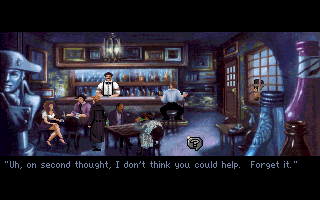 Gabriel Knight: Sins of the Fathers (1993)
Gabriel Knight: Sins of the Fathers (1993)
Composed by Robert Holmes. Developed and published by Sierra On-Line.
The SC-55 soundtrack for Sierra’s first entry in the Gabriel Knight series, with classical, jazz and rock influences, shows the full range of the sound module’s capabilities. Pay particular attention to the swell of the piano, organ and chorus about two thirds into the first piece.
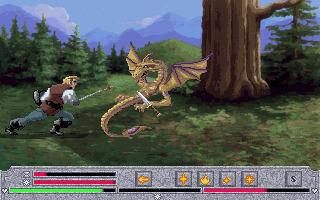 Quest for Glory IV: Shadows of Darkness (1993)
Quest for Glory IV: Shadows of Darkness (1993)
Composed by Aubrey Hodges. Developed and published by Sierra On-Line.
In addition to a much better acoustic grand piano, the SC-55 featured guitar sounds that were vastly superior to those on the MT-32. The Quest for Glory IV soundtrack features heavy use of the electric guitar sound and utilizes real playing techniques such as bends, tremolo picking and hammer-ons.
1992: Gravis UltraSound
 There
are many who believe that Gravis is the company that should have won
the sound card wars in the early ’90s. During this time, Creative Labs
dragged their heels a bit, improving the Sound Blaster slowly because no
other company posed any real competition. During this time, Creative’s
flagship product was the Sound Blaster Pro, which featured two
Yamaha YM3812 chips for stereo music and had the ability to record
stereo sounds up to 22.05 kHz and mono sounds up to 44.1 kHz. However,
the sample size was still limited to 8 bits. The Gravis Ultrasound
represented a major step forward; out of the box, it could play 16-bit
sounds and record 8-bit sounds with a maximum sample rate of 44.1 kHz.
It was also possible to upgrade the Ultrasound with an add-on board that
allowed it to record 16-bit sounds in full CD quality.
There
are many who believe that Gravis is the company that should have won
the sound card wars in the early ’90s. During this time, Creative Labs
dragged their heels a bit, improving the Sound Blaster slowly because no
other company posed any real competition. During this time, Creative’s
flagship product was the Sound Blaster Pro, which featured two
Yamaha YM3812 chips for stereo music and had the ability to record
stereo sounds up to 22.05 kHz and mono sounds up to 44.1 kHz. However,
the sample size was still limited to 8 bits. The Gravis Ultrasound
represented a major step forward; out of the box, it could play 16-bit
sounds and record 8-bit sounds with a maximum sample rate of 44.1 kHz.
It was also possible to upgrade the Ultrasound with an add-on board that
allowed it to record 16-bit sounds in full CD quality.
The music synthesizer component of the Ultrasound was also miles ahead of the Sound Blaster Pro. The Ultrasound came with 256 KB of built-in sample memory and supported a maximum of 1 MB. Using this sample memory, composers and game programmers could create “tracker music” — constructed by manipulating digital samples rather than sending commands to a hardware synthesizer — using samples stored entirely in the sound card’s memory. In addition, the Ultrasound featured a hardware mixer that could independently adjust the volume of each voice before sending it to the computer’s speakers. The Sound Blaster Pro also supported tracked music, but it had no built-in memory and relied on the computer’s processor to mix multiple voices. During a time when a typical computer had a 386 or 486 processor and 4-8 MB of RAM, allocating 256 KB of system memory to audio samples and using the processor to mix voices resulted in a significant drain on system resources. Games utilizing the Ultrasound had better sound quality and smoother animation.
However, the Gravis Ultrasound had trouble gaining acceptance among consumers who weren’t hardcore gamers, musicians or demoscene members because it lacked the Yamaha YM3812 chip and therefore wasn’t completely Sound Blaster-compatible. By this time, Creative Labs had been successful in creating an industry standard that consumers looked for when buying sound cards. My research suggests that Gravis announced the Ultrasound in 1991, but didn’t release it until October 1992. This gave Creative plenty of time to prepare a counter-attack, resulting in the release of the Sound Blaster 16 in June 1992.
Listen to the Gravis Ultrasound
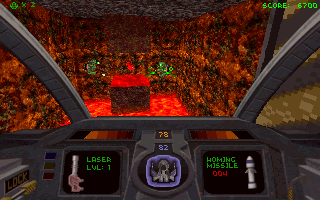 Descent (1995)
Descent (1995)
It could sometimes be difficult to find games with proper support for the Gravis UltraSound
Monday, September 03. 2012
The History of the Floppy Disk
Via input output
-----
In the fall of 1977, I experimented with a newfangled PC, a Radio Shack TRS-80. For data storage it used—I kid you not—a cassette tape player. Tape had a long history with computing; I had used the IBM 2420 9-track tape system on IBM 360/370 mainframes to load software and to back-up data. Magnetic tape was common for storage in pre-personal computing days, but it had two main annoyances: it held tiny amounts of data, and it was slower than a slug on a cold spring morning. There had to be something better, for those of us excited about technology. And there was: the floppy disk.
Welcome to the floppy disk family: 8”, 5.25” and 3.5”
In the mid-70s I had heard about floppy drives, but they were expensive, exotic equipment. I didn't know that IBM had decided as early as 1967 that tape-drives, while fine for back-ups, simply weren't good enough to load software on mainframes. So it was that Alan Shugart assigned David L. Noble to lead the development of “a reliable and inexpensive system for loading microcode into the IBM System/370 mainframes using a process called Initial Control Program Load (ICPL).” From this project came the first 8-inch floppy disk.
Oh yes, before the 5.25-inch drives you remember were the 8-inch floppy. By 1978 I was using them on mainframes; later I would use them on Online Computer Library Center (OCLC) dedicated cataloging PCs.
The 8-inch drive began to show up in 1971. Since they enabled developers and users to stop using the dreaded paper tape (which were easy to fold, spindle, and mutilate, not to mention to pirate) and the loathed IBM 5081 punch card. Everyone who had ever twisted a some tape or—the horror!—dropped a deck of Hollerith cards was happy to adopt 8-inch drives.
Before floppy drives, we often had to enter data using punch cards.
Besides, the early single-sided 8-inch floppy could hold the data of up to 3,000 punch cards, or 80K to you. I know that's nothing today — this article uses up 66K with the text alone – but then it was a big deal.
Some early model microcomputers, such as the Xerox 820 and Xerox Alto, used 8-inch drives, but these first generation floppies never broke through to the larger consumer market. That honor would go to the next generation of the floppy: the 5.25 inch model.
By 1972, Shugart had left IBM and founded his own company, Shugart Associates. In 1975, Wang, which at the time owned the then big-time dedicated word processor market, approached Shugart about creating a computer that would fit on top of a desk. To do that, Wang needed a smaller, cheaper floppy disk.
According to Don Massaro (PDF link), another IBMer who followed Shugart to the new business, Wang’s founder Charles Wang said, “I want to come out with a much lower-end word processor. It has to be much lower cost and I can't afford to pay you $200 for your 8" floppy; I need a $100 floppy.”
So, Shugart and company started working on it. According to Massaro, “We designed the 5 1/4" floppy drive in terms of the overall design, what it should look like, in a car driving up to Herkimer, New York to visit Mohawk Data Systems.” The design team stopped at a stationery store to buy cardboard while trying to figure out what size the diskette should be. “It's real simple, the reason why it was 5¼,” he said. “5 1/4 was the smallest diskette that you could make that would not fit in your pocket. We didn't want to put it in a pocket because we didn't want it bent, okay?”
Shugart also designed the diskette to be that size because an analysis of the cassette tape drives and their bays in microcomputers showed that a 5.25” drive was as big as you could fit into the PCs of the day.
According to another story from Jimmy Adkisson, a Shugart engineer, “Jim Adkisson and Don Massaro were discussing the proposed drive's size with Wang. The trio just happened to be doing their discussing at a bar. An Wang motioned to a drink napkin and stated 'about that size' which happened to be 5 1/4-inches wide.”
Wang wasn’t the most important element in the success of the 5.25-inch floppy. George Sollman, another Shugart engineer, took an early model of the 5.25” drive to a Home Brew Computer Club meeting. “The following Wednesday or so, Don came to my office and said, 'There's a bum in the lobby,’” Sollman says. “‘And, in marketing, you're in charge of cleaning up the lobby. Would you get the bum out of the lobby?’ So I went out to the lobby and this guy is sitting there with holes in both knees. He really needed a shower in a bad way but he had the most dark, intense eyes and he said, 'I've got this thing we can build.'”
The bum's name was Steve Jobs and the “thing” was the Apple II.
Apple had also used cassette drives for its first computers. Jobs knew his computers also needed a smaller, cheaper, and better portable data storage system. In late 1977, the Apple II was made available with optional 5.25” floppy drives manufactured by Shugart. One drive ordinarily held programs, while the other could be used to store your data. (Otherwise, you had to swap floppies back-and-forth when you needed to save a file.)
The PC that made floppy disks a success: 1977's Apple II
The floppy disk seems so simple now, but it changed everything. As IBM's history of the floppy disk states, this was a big advance in user-friendliness. “But perhaps the greatest impact of the floppy wasn’t on individuals, but on the nature and structure of the IT industry. Up until the late 1970s, most software applications for tasks such as word processing and accounting were written by the personal computer owners themselves. But thanks to the floppy, companies could write programs, put them on the disks, and sell them through the mail or in stores. 'It made it possible to have a software industry,' says Lee Felsenstein, a pioneer of the PC industry who designed the Osborne 1, the first mass-produced portable computer. Before networks became widely available for PCs, people used floppies to share programs and data with each other—calling it the 'sneakernet.'”
In short, it was the floppy disk that turned microcomputers into personal computers.
Which of these drives did you own?
The success of the Apple II made the 5.25” drive the industry standard. The vast majority of CP/M-80 PCs, from the late 70s to early 80s, used this size floppy drive. When the first IBM PC arrived in 1981 you had your choice of one or two 160 kilobyte (K – yes, just oneK) floppy drives.
Throughout the early 80s, the floppy drive became the portable storage format. (Tape quickly was relegated to business back-ups.) At first, the floppy disk drives were only built with one read/write head, but another set of heads were quickly incorporated. This meant that when the IBM XT PC arrived in 1983, double-sided floppies could hold up to 360K of data.
There were some bumps along the road to PC floppy drive compatibility. Some companies, such as DEC with its DEC Rainbow, introduced its own non-compatible 5.25” floppy drives. They were single-sided but with twice the density, and in 1983 a single box of 10 disks cost $45 – twice the price of the standard disks.
In the end, though, market forces kept the various non-compatible disk formats from splitting the PC market into separate blocks. (How the data was stored was another issue, however. Data stored on a CP/M system was unreadable on a PC-DOS drive, for examples, so dedicated applications like Media Master promised to convert data from one format to another.)
That left lots of room for innovation within the floppy drive mainstream. In 1984, IBM introduced the IBM Advanced Technology (AT) computer. This model came with a high-density 5.25-inch drive, which could handle disks that could up hold up to 1.2MB of data.
A variety of other floppy drives and disk formats were tried. These included 2.0, 2.5, 2.8, 3.0, 3.25, and 4.0 inch formats. Most quickly died off, but one, the 3.5” size – introduced by Sony in 1980 – proved to be a winner.
The 3.5 disk didn't really take off until 1982. Then, the Microfloppy Industry Committeeapproved a variation of the Sony design and the “new” 3.5” drive was quickly adopted by Apple for the Macintosh, by Commodore for the Amiga, and by Atari for its Atari ST PC. The mainstream PC market soon followed and by 1988, the more durable 3.5” disks outsold the 5.25” floppy disks. (During the transition, however, most of us configured our PCs to have both a 3.5” drive and a 5.25” drive, in addition to the by-now-ubiquitous hard disks. Still, most of us eventually ran into at least one situation in which we had a file on a 5.25” disk and no floppy drive to read it on.)
I
The one 3.5” diskette that everyone met at one time or another: An AOL install disk.
The first 3.5” disks could only hold 720K. But they soon became popular because of the more convenient pocket-size format and their somewhat-sturdier construction (if you rolled an office chair over one of these, you had a chance that the data might survive). Another variation of the drive, using Modified Frequency Modulation (MFM) encoding, pushed 3.5” diskettes storage up to 1.44Mbs in IBM's PS/2 and Apple's Mac IIx computers in the mid to late 1980s.
By then, though floppy drives would continue to evolve, other portable technologies began to surpass them.
In 1991, Jobs introduced the extended-density (ED) 3.5” floppy on his NeXT computer line. These could hold up to 2.8MBs. But it wasn't enough. A variety of other portable formats that could store more data came along, such as magneto-optical drives and Iomega's Zip drive, and they started pushing floppies out of business.
The real floppy killers, though, were read-writable CDs, DVDs, and, the final nail in the coffin: USB flash drives. Today, a 64GB flash drive can hold more data than every floppy disk I've ever owned all rolled together.
Apple prospered the most from the floppy drive but ironically was the first to abandon it as read-writable CDs and DVDs took over. The 1998 iMac was the first consumer computer to ship without any floppy drive.
However, the floppy drive took more than a decade to die. Sony, which at the end owned 70% of what was left of the market, announced in 2010 that it was stopping the manufacture of 3.5” diskettes.
Today, you can still buy new 1.44MB floppy drives and floppy disks, but for the other formats you need to look to eBay or yard sales. If you really want a new 3.5” drive or disks, I'd get them sooner than later. Their day is almost done.
But, as they disappear even from memory, we should strive to remember just how vitally important floppy disks were in their day. Without them, our current computer world simply could not exist. Before the Internet was open to the public, it was floppy disks that let us create and trade programs and files. They really were what put the personal in “personal computing.”
Quicksearch
Popular Entries
- The great Ars Android interface shootout (130673)
- Norton cyber crime study offers striking revenue loss statistics (100895)
- MeCam $49 flying camera concept follows you around, streams video to your phone (99679)
- Norton cyber crime study offers striking revenue loss statistics (57124)
- The PC inside your phone: A guide to the system-on-a-chip (56965)
